Finish headache magazine
Text: Mirva Hämäläinen (Ed. Herttakaisa Kettunen)This article was first published in Finnish in Migraine Association of Finland’s magazine Päänsärky.
It was translated by volunteer Ms Venla Kallio. Ms Mirva Hämäläinen is also a volunteer in Migraine Association of Finland
For her master’s thesis, Mirva Hämäläinen collected reports from people with migraine about the effects and meaning of migraine in their lives. The reports revealed, for example, that the best support comes from people who are guaranteed to understand each other because of similar experiences.
Mirva Hämäläinen has had migraines for a few years and unspecified headaches since youth. The migraines became worse over time, probably due to study and work stress, and she, therefore, sought help from occupational health care and was further examined by a neurologist. For a long time her headaches were treated as tension headaches, but slowly her migraines started to resemble migraines more. Hämäläinen has trouble identifying different stages of her condition, because the headaches “have just always been there.”
Hämäläinen’s interest in this research topic is based not only on her personal history but also on how the condition causes troubles in different aspects of life.
“Migraines have barely been studied in social sciences despite the fact that it is a very common neurological condition. In my thesis, I aimed at bringing out the various effects migraines can have on people’s lives. The thesis sheds light on problems met, for example, at work or with treatment, and there is an extensive need for more knowledge in these areas in the future too,” Hämäläinen says.
A shared world in peer support
For her thesis, Hämäläinen created a Facebook group that was joined by 120 people. “The discussions and life stories in this support group have created a world that makes migraines a collective illness and a shared headache,” Hämäläinen says.
“The peer support group creates a shared world where people with migraines analyze their illness and find meanings for it as a part of their lives. In addition to the shared experiences, people’s understanding about migraines is broadened through seeing and sympathizing with the effects of migraines. So the shared migraines are something that people go through personally but also sympathize with.”
“In people’s stories, migraines undeniably appear as an ‘octopus with multiple tentacles,’ and through physical symptoms it invades the life of the patient impacting everything, including the patient’s social life. The condition is diverse, individual and at worst completely disabling and paralyzing, mentally and physically, and therefore it can cause conflicts in different everyday situations.”
“Living and going about your life requires ‘using your head,’ and migraines disrupt and paralyze the command center that regulates the whole body.”
Living “with the hand brake on”
One thing the support group discussed was how the effects of the illness are manifested at work, with family and loved ones, in hobbies and all the other situations where you have to manage despite the condition. For people with chronic illnesses, the so-called everyday life, managing it and functioning, can be a constant struggle to keep on going from one day to the next, one moment to the next and one hour to the next.
“People with migraines try to make their lives regular and steady in order to eliminate those triggers that can be eliminated. Therefore people with migraines have to life ‘with the hand brake on.'”
“On the one hand, people try to arrange their everyday life so that it provokes the migraine as little as possible, but on the other hand, they try to maintain life as ‘normal’ as possible because they do not want to give in to the condition. The fear of the condition becoming worse brings feelings of insecurity and worry about financial security,” says Hämäläinen.
Finnish culture values activity, grit, heroism and bravely fighting an invisible enemy, and this creates pressure to manage everyday life despite factors that make it difficult. Mirva Hämäläinen says that the Finnish values of independence and activity make people depreciate public pain and see it as an inevitable part of life. “Migraine patients meet challenging situations in the workplace if their condition is not understood and ‘the boss looks unhappy.’ Migraine patients grit their teeth and try to manage work by staying at the workplace with the help of medication, even though they have a migraine attack.
Time will tell
The discussions and stories in the Facebook group revealed that the younger the migraine symptoms had started, the more people saw them as a part of their lives. With many members, the migraine symptoms have appeared already during childhood or during teenage years at the latest and the migraines “had just always been there.”
“Migraines or the worsening of the condition were then again seen as more disruptive to everyday life when they began during adulthood,” says Hämäläinen.
Group members looked for reasons for the migraines appearing or becoming chronic from their own life stories. Often they had sought help because of vomiting, unbearable pain and other strong symptoms that made everyday life a struggle.
“Getting a diagnosis and medication to stop an attack often came up as turning points where living with migraines and stopping the attacks became easier.”
Migraine is a hereditary disease, so for many people the illness had not come as a surprise. Reasons for the migraine becoming worse or chronic were, for example, a stressful situation in life, inadequate care or insufficient medication which had led to the migraines getting out of hand. Thus people sometimes saw the worsened condition as their own fault. With medication the illness can be more easily controlled, but there is no guarantee of an effective medication and “only time will tell” what the migraine will be like in the future.
Varied experiences of treatment
The discussions revealed many kinds of experiences of treatment. Positive experiences focused on listening to the patient, not underrating them and giving enough time for the appointment. People saw experts as more credible when they acknowledged their professional skills and limits.
Another important thing was treating migraine together with a doctor. People expected expert advice on how to live with the condition because often patients were just “sent home with a prescription.”
“Migraine patients’ symptoms have been underrated and questioned, and some doctors have referred to mental health problems,” says Mirva Hämäläinen.
The importance of personal expertise
“Each patient must personally learn the effects of different medications and their combinations on their symptoms. People learn ‘the hard way’ the effects of different triggers and the importance of medication and its correct timing.”
“The patient must also be able to make decisions about medication alone because a doctor’s expertise is not always sufficient and consultation is not always available. The fear of an attack makes patients always carry ‘a medicine pouch’ with them.
Hämäläinen points out that in many cases the research material revealed how people keep going and struggle through everyday life “with the help of medication.” Medication gives more strength to fight the condition, and with migraine medication, patients can “buy a couple of hours of life.” The Western and Finnish cultures value individuality, and managing and controlling one’s illness is seen as the individual’s responsibility. Peer support becomes important when the individual has no professional support or it cannot reach all areas of life.
Support and understanding
Support from loved ones and friends turned out to be meaningful for people with migraines. Important support is also offered by peer support groups and others with the same condition.
“Many stories revealed a longing for understanding.”
“The best support for living with the condition comes from similar people who are sure to understand because of their similar experiences. Peer support was seen to be special and to guarantee more understanding compared to other social networks. In addition, people living with the patient and people with other illnesses were seen as most likely to understand. Migraine patients seek peer support in difficult situations and share information about how to make everyday life easier. In support groups, people share information that healthcare professionals do not always have.
A dream team
Through their condition, migraine patients have learned to enjoy life and its good moments, and for some the condition has been helpful in the health sector jobs and in understanding another person’s pain. However, the stories also included negative adjectives that described the patient’s personalities and behavior that had been changed with the condition. People described themselves as “lazy, stupid and inefficient,” but at the same time they reminded themselves that the patient identity is not part of the person’s core identity. Along the years, the condition has taught patients to have a more regulated, a more careful and a stricter life, and sometimes even pessimism and cynicism have crept into the patient’s mind. Even so, migraine patients are “a dream team” that survive with grit and persistence from one day to the other.














